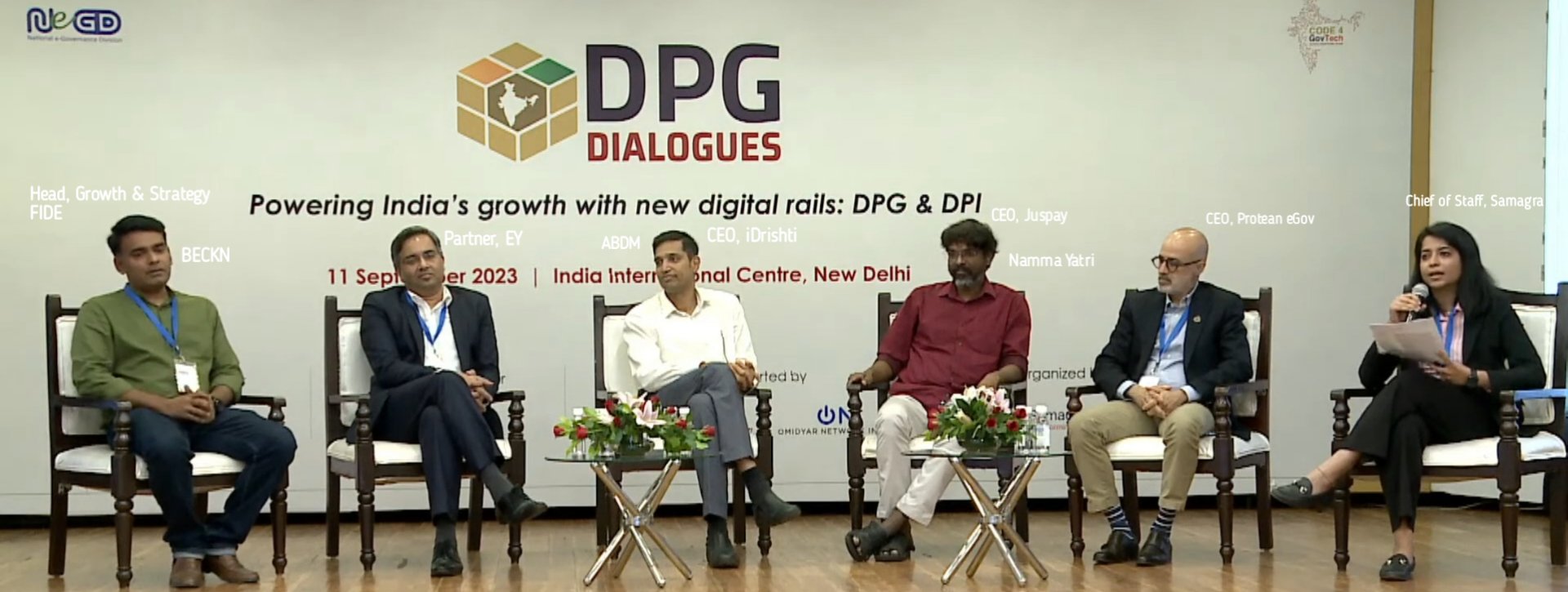Exploring India's Digital Rails - DPG and DPI
 Lakshay Gupta
Lakshay Gupta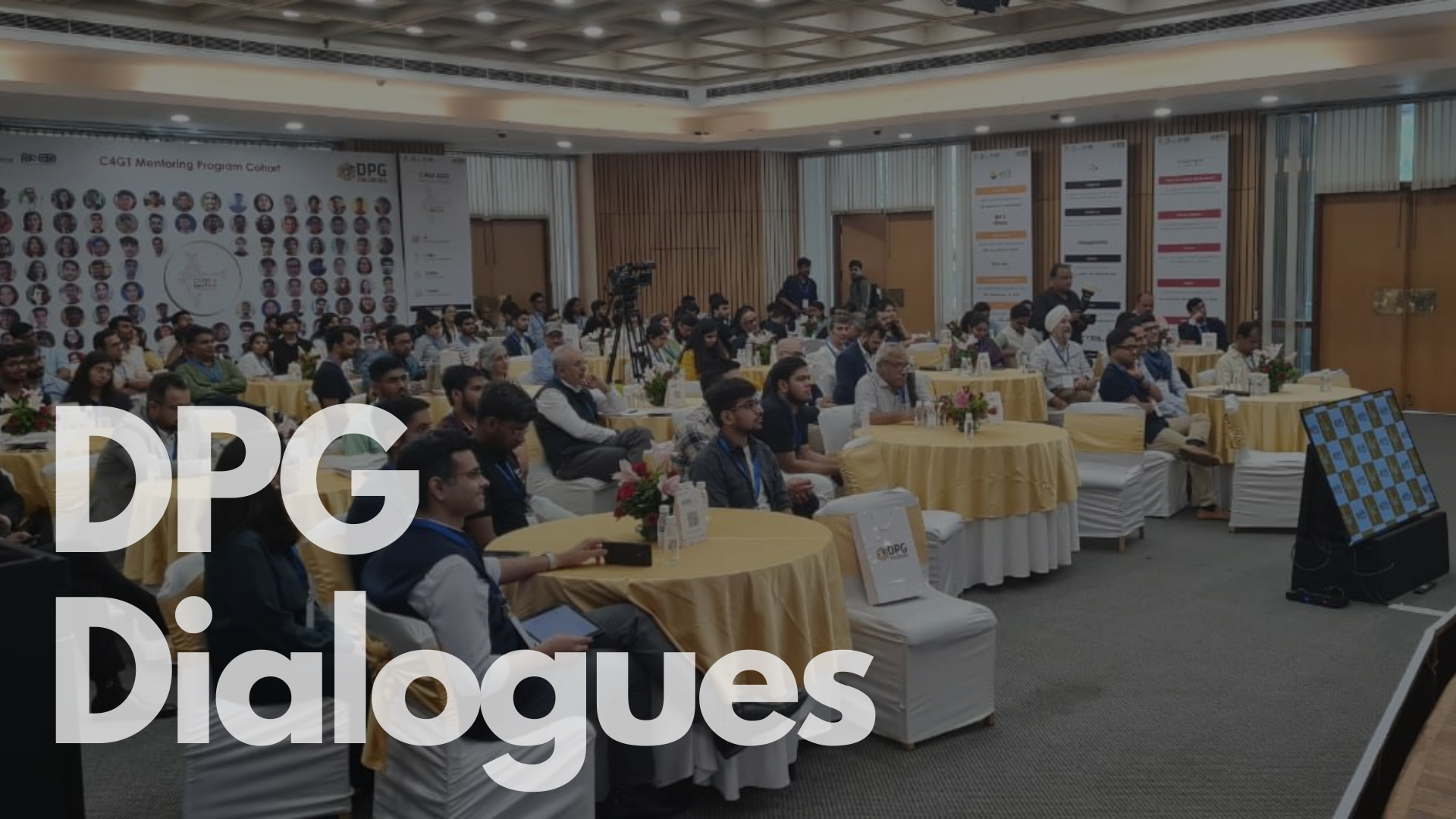
India is changing and this new change won't be limited to any specific part of the country. It is going to travel through the network of Digital rails - DPG and DPI and reach the remotest parts of our country. I got an opportunity to experience this change in the first edition of DPG dialogues. If you are a student who wants a ticket to this Digital train of innovation, take a seat and keep reading as I take you through a trip you won’t regret taking.
But before moving ahead let's just understand what DPG and DPI are.
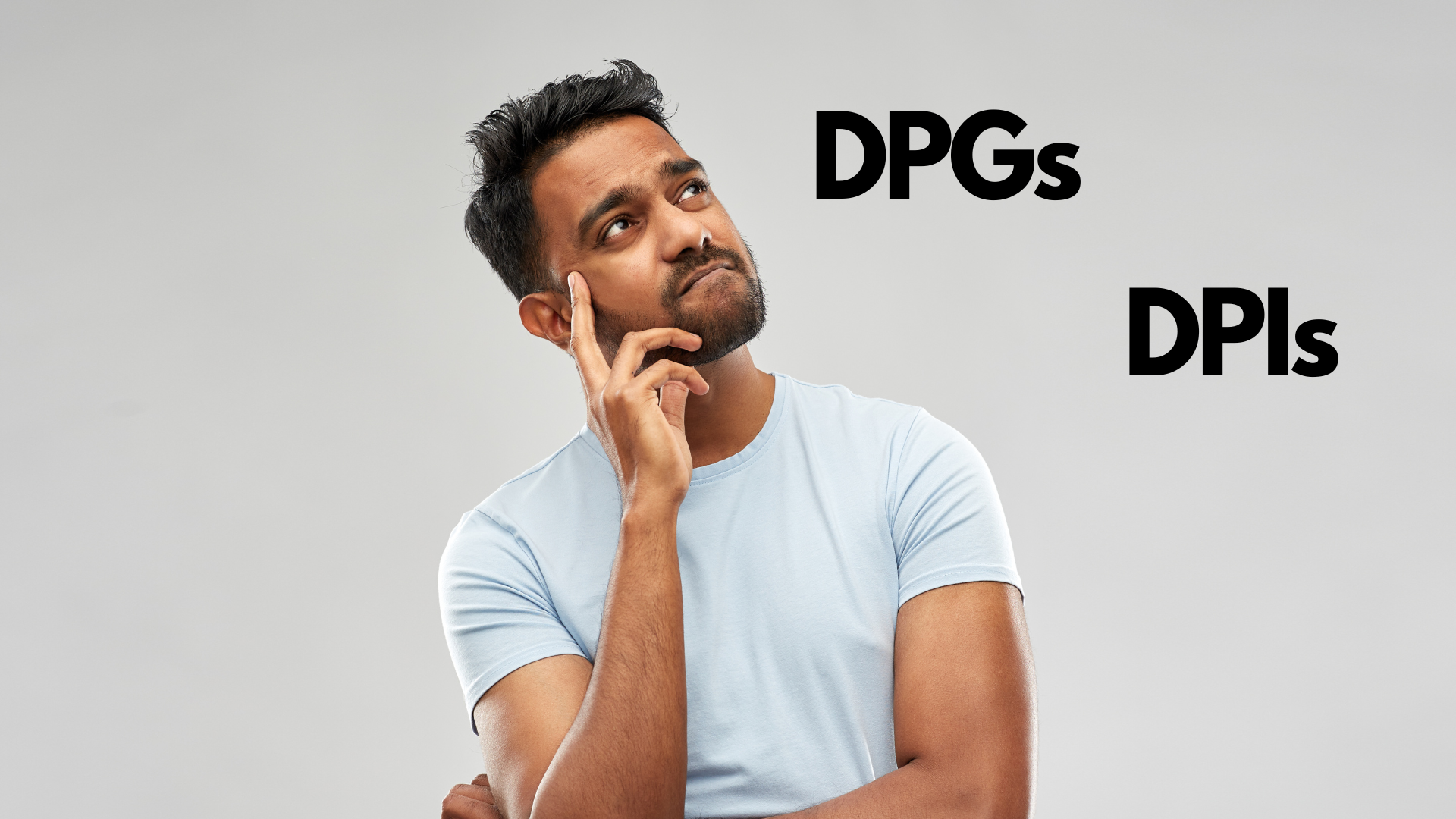
DPG stands for Digital Public Goods whereas DPI stands for Digital Public Infrastructure. Open sourced, Interoperability and Scalability, are some of the key qualities that you can find in them. They are projects designed to solve population-scale problems. E.g. Aadhar, UPI, DigiLocker and the recently popularised ONDC. The successful G20 New Delhi Leader's Declaration mentioned building a Global Digital Public Infrastructure Repository (GDPIR) which will enable access to such solutions at a global level.
DPG Dialogues
The event came amidst the backdrop of a successful G20 event. It served as a platform to bring together all the stakeholders of the DPG ecosystem - Creators, Contributors and Consumers. The event was attended by a lot of pioneers of India’s Digital Ecosystem. Dr. R.S. Sharma - Ex CEO of NHA & UIDAI, Shri Abhishek Singh - MD & CEO, Digital India Corporation & Vimal Kumar - Founder and CEO of Juspay to name a few. It was organized by Samagra in collaboration with other partners who collaborated to put together this one-of-its-kind forum.
The event agenda comprised fireside chats with the distinguished leaders of the ecosystem, three different tracks covering Governments, Ecosystems and Markets. Each track consisted of a well-balanced panel where every person had their unique insights to share on several topics ranging from Community Building in the DPG ecosystem to a market potential of $100 Billion that is going to be there by 2030.
While the whole 7+ hours of the talks can't be described in words, here are some of my key insights from the forum.
(Panel for markets track at DPG Dialogues)
BECKN Protocol
In the simplest words, think of BECKN protocol as a language that can be used to transact with each other. A language that allows a buyer to connect with a seller and trade things. Ravi, who currently heads FIDE (formerly BECKN), shared his insights about how we need to shift our mental model from platforms to networks. As of now, let's say we have something (e.g. money) and we want to purchase something (e.g. EV Charging spot), the first thing that comes to our mind is, "Is there an app for this?". How about we think, "Is there any network that can fulfill our request?". In this case, you don't care about what app you may use. This is the kind of mental model needed amongst the developers who try to build solutions at a protocol level which can then be used by any number of customer-focussed applications. One thing that stood out to me was that in such population-scale projects, Scalability can not be an afterthought. It has to be a key component while designing the product from day 1. BECKN protocol has been at the root of ONDC which aims to democratise eCommerce.
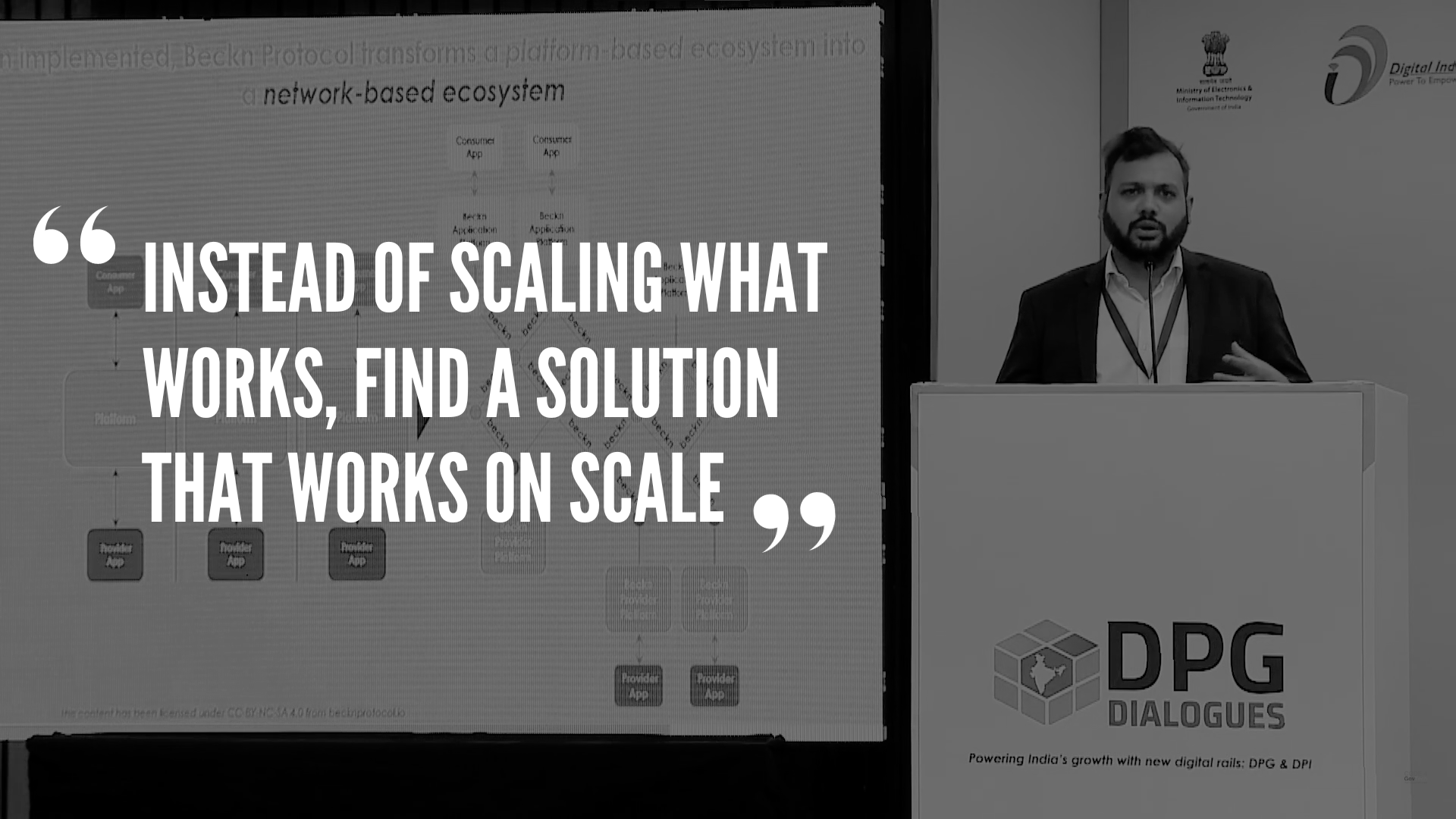
(Ravi Prakash - Head of Architecture and Technology Ecosystem at FIDE)
BHASHINI
Ours is a land of cultural diversity. We take pride in the different cultural identities that live together in harmony. They all have different cultures, eat different food, and speak different languages. Bhashini aims to cater to such an audience and build speech analysis tools that can identify and process such a diverse set of languages. It will be a victory for technology when it reaches millions of Indians who don't speak english. Imagine if a farmer in Orissa could check the prices of fertilizers by sending a voice note in his native language to a voice assistant. On the backend, the system receives the audio, converts it into text, finds a response and sends back a voice message - again in the native language of that farmer. It's an uphill task to train such language models in native languages.
Bhashini aims to build a National Public Digital Platform for languages to develop services and products for citizens by leveraging the power of artificial intelligence and other emerging technologies.
The Bhashini team has been spending nearly 60-70 crores INR for collecting the data in all such different languages. The future holds many applications of voice-based search technology and Amitabh Nag’s talk was a testimonial to all the developments that are currently unfolding at Bhashini.
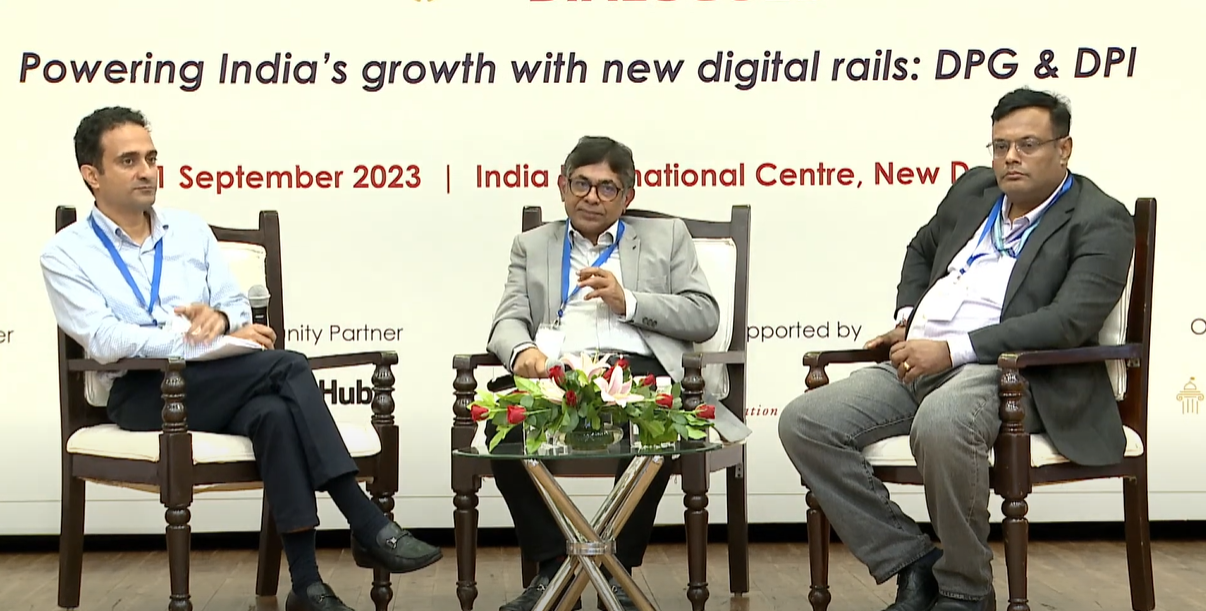
(Left to right: Nitin Kashyap - Head of Product at Samagra, T. Koshy - MD & CEO at ONDC, Amitabh Nag - CEO at Bhashini)
Unlocking the Power of Communities
Here's the part you all have been waiting for. Read ahead to know how you can prove your skills and get a chance to implement your knowledge to solve real-world problems. Nowadays with so many job opportunities getting bombarded with thousands of applications within minutes, it has become quite difficult to stand out with just our resume. With changing times, the job recruitment process is also expecting a change sooner or later.
One way to get the much-needed exposure & experience is to contribute to Digital Public Goods. The organizations behind such projects are looking for enthusiastic contributors who can shape future developments. If they want to hire, instead of carrying out the usual process of rolling out job posters they can easily identify the top contributors and directly reach out to them to fulfill their needs. In addition to that, these contributions serve as a testimonial to your skills.
This was a key topic touched upon in the community track of the event. Later in the talk, Ravi mentioned how people nowadays appreciate instant gratification in return for their work. CodeForGovTech addresses this with their DPG Community toolkit. Mr. Rahul Kulkarni - Chief Technologist at Samagra, raised the curtains from the C4GT Community Program. It aims to build an ecosystem of developers who contribute regularly to DPG. Understanding the problems faced by people while contributing, they prepared a framework for organizations as well as contributors. While the project owners get to understand how to structure their repository to welcome the contributors, the developers get their efforts recognized and rewarded through a point-based system. As you climb up the ladder, you get access to rewards such as goodies, community recognition, and even potential job opportunities inside the ecosystem.
Here's a fact, I got an opportunity to attend this exclusive event because of my community contributions. As a student myself, I feel such opportunities provide the right mix of mentorship and exposure one needs to implement their knowledge into solving real-world problems.
These were some of the lessons I learned from the insightful talks that took place during the event. Post the event, I was fortunate enough to get an opportunity to interact with Vimal - Founder at Juspay, where he shared his working principles of life. The conversation was full of wisdom that it deserves a blog of its own but here are some insights from the man behind Namma Yatri - a popular auto-booking app.
The Aesthetics of Designing a Solution
While the conversation started from appreciating the beauty of Rust and Ruby as a language, one thing led to another and Vimal shared his views about focussing on the aesthetics while creating something - e.g. a song, a painting or even a dashboard. He shared his interests in solving mathematical problems and how he found the art of aesthetics while learning to play piano. Just like while playing the piano he focussed on the aesthetics of the sounds instead of thinking subjectively, he suggested thinking aesthetically while designing solutions too. Be it any piece of code or a system, think about the aesthetics and you are on a path to finding success. And this skill is not something that can be learned but comes from inside.
He later went on to share his views about going into the depths of a topic. A depth can be seen from 2 perspectives-
Depth of Understanding - how deeply you understand a particular topic or in simpler words, your clarity about the fundamentals of that particular topic.
Depth of Expression - how easily can you express your knowledge about that particular topic in front of others.
For a dancer, it is a combination of both that makes them a great dancer. In our lives too we can adopt a similar approach. One of the key learnings for me was his advice about trying new things.
Whenever you are unsure about a particular idea, just try building a prototype of it and releasing it to a small set of users. Even before releasing it to others, be your first user and think would you be willing to use it?
His clarity about how some ideas sound good but might not be practical reflects in his way of doing work. It is an opportunity of a lifetime where you get to interact with such visionaries and exchange ideas. Vimal's humble nature and zeal to interact with the students present there surely taught me a lesson in humility that I will never forget.
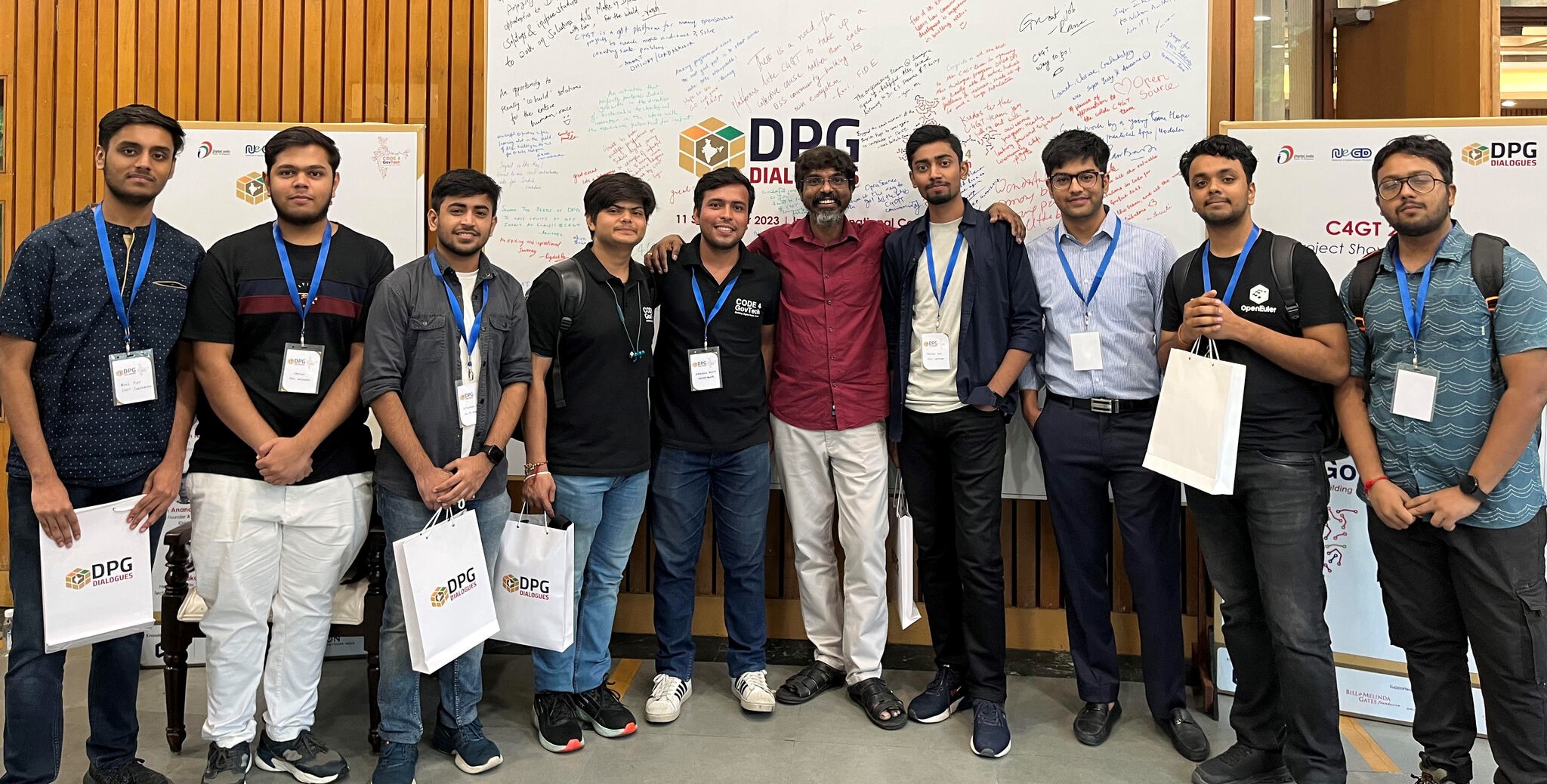
Concluding note
I went to the event with a mind full of curiosity and an appetite to learn and came back home with a stomach full of great food and a bag full of wisdom pearls that I am going to share as much as I can. The event allowed me to network with like-minded people, understand different perspectives on solving real-world problems and give me enough fuel to drive my inner curiosity to learn more. The impact that people like you and me can together make will help us achieve the vision of our country. What are you waiting for? Head over to the community page and get involved from today!
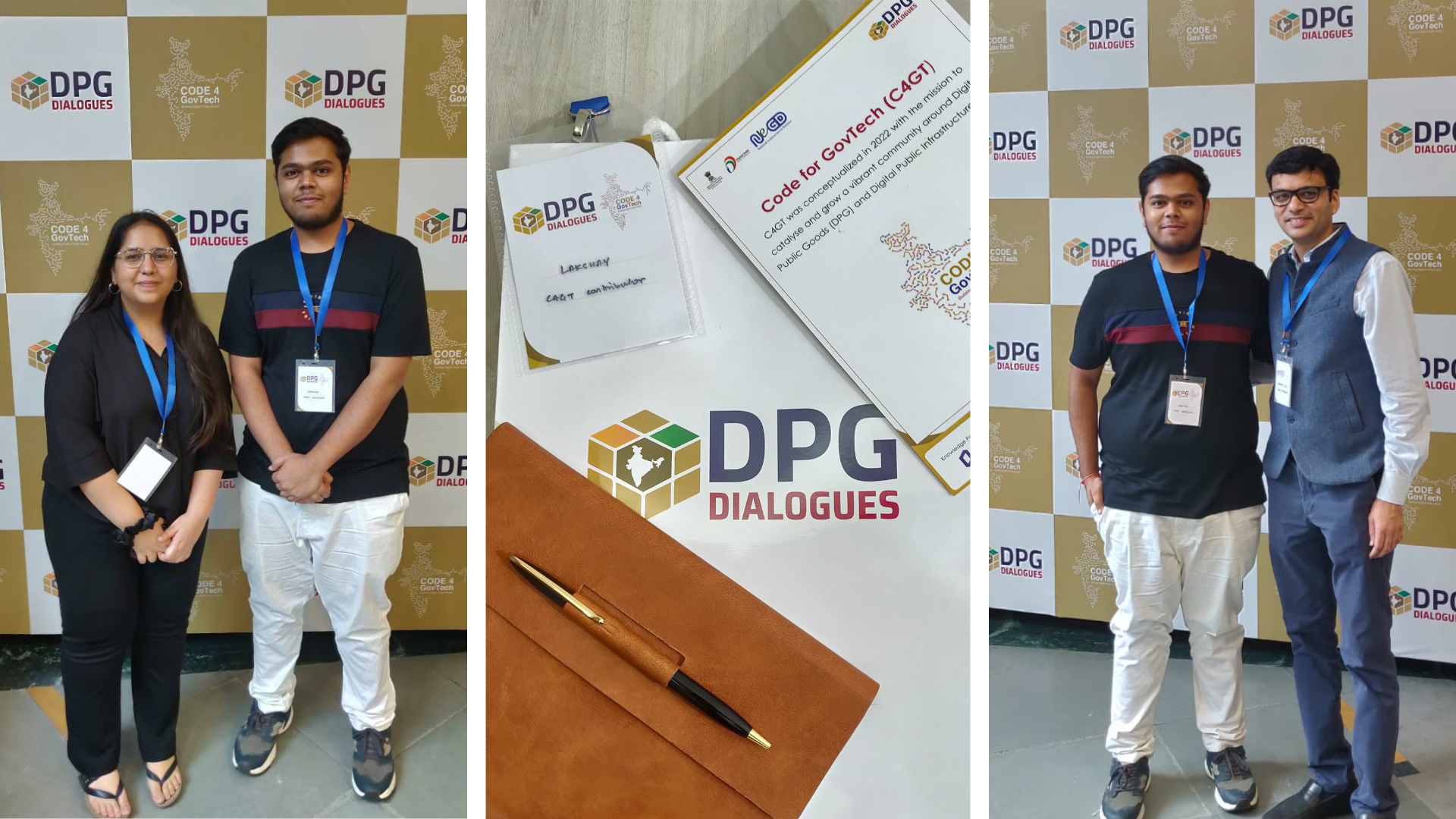
(Left to right: Bhavya Berlia - Senior Associate at Samagra, Gaurav Goel - Founder & CEO at Samagra)
If you enjoyed reading the blog, don't forget to like it. Feel free to connect with me and share your opinion about the Digital Rails. If you have any suggestions do drop them in the comments below. At last, if you are interested in knowing more about the talks that happened, here's a live recording of the event.
Yours truly,
Void-ness
Subscribe to my newsletter
Read articles from Lakshay Gupta directly inside your inbox. Subscribe to the newsletter, and don't miss out.
Written by

Lakshay Gupta
Lakshay Gupta
My friends used to poke me for writing long messages while texting. I thought why not benefit from it? I have led communities, ran startups, built viral apps, and made youtube vlogs.. Yes, I am an engineer.
